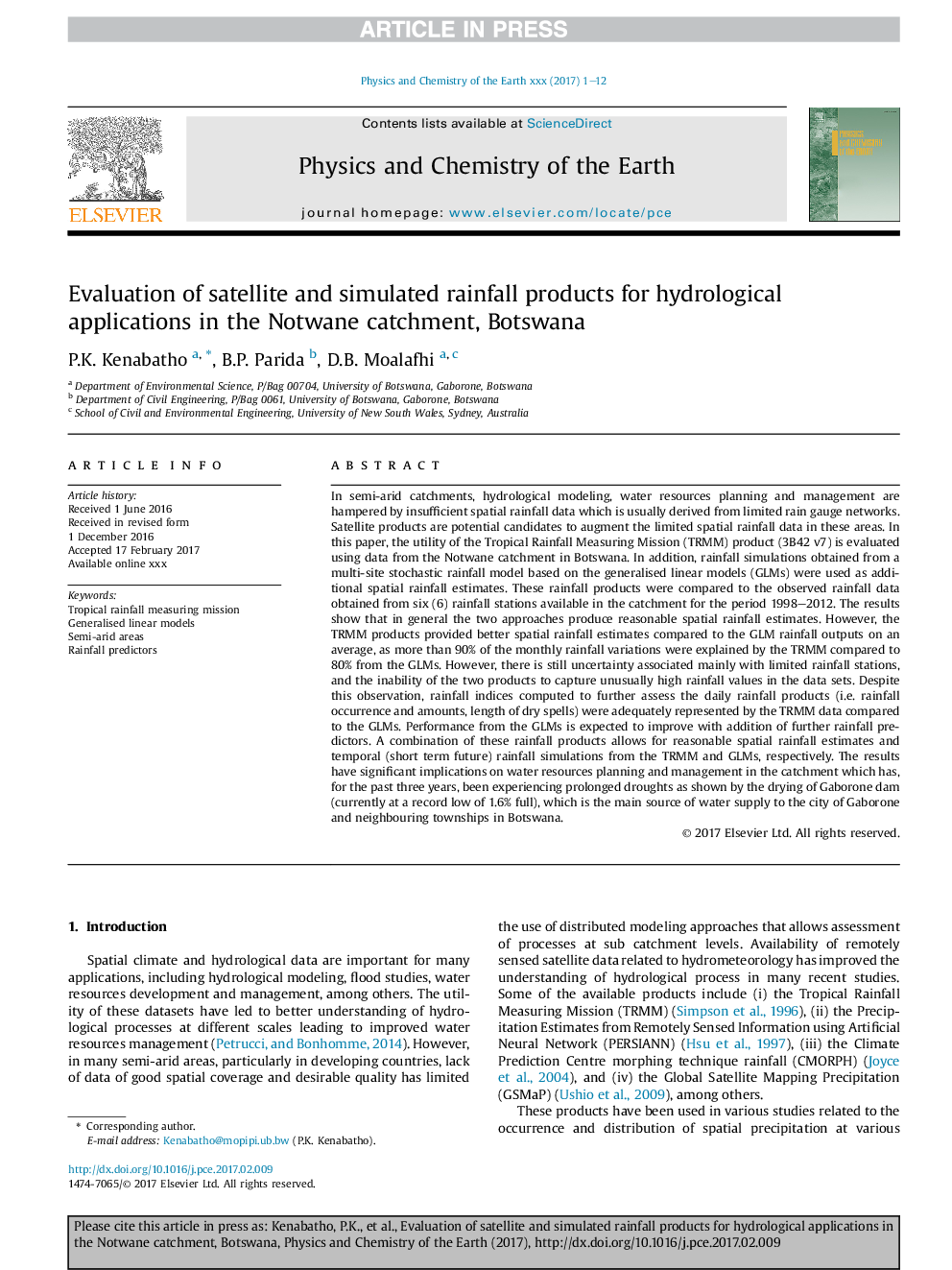| Article ID | Journal | Published Year | Pages | File Type |
|---|---|---|---|---|
| 5784543 | Physics and Chemistry of the Earth, Parts A/B/C | 2017 | 12 Pages |
Abstract
In semi-arid catchments, hydrological modeling, water resources planning and management are hampered by insufficient spatial rainfall data which is usually derived from limited rain gauge networks. Satellite products are potential candidates to augment the limited spatial rainfall data in these areas. In this paper, the utility of the Tropical Rainfall Measuring Mission (TRMM) product (3B42 v7) is evaluated using data from the Notwane catchment in Botswana. In addition, rainfall simulations obtained from a multi-site stochastic rainfall model based on the generalised linear models (GLMs) were used as additional spatial rainfall estimates. These rainfall products were compared to the observed rainfall data obtained from six (6) rainfall stations available in the catchment for the period 1998-2012. The results show that in general the two approaches produce reasonable spatial rainfall estimates. However, the TRMM products provided better spatial rainfall estimates compared to the GLM rainfall outputs on an average, as more than 90% of the monthly rainfall variations were explained by the TRMM compared to 80% from the GLMs. However, there is still uncertainty associated mainly with limited rainfall stations, and the inability of the two products to capture unusually high rainfall values in the data sets. Despite this observation, rainfall indices computed to further assess the daily rainfall products (i.e. rainfall occurrence and amounts, length of dry spells) were adequately represented by the TRMM data compared to the GLMs. Performance from the GLMs is expected to improve with addition of further rainfall predictors. A combination of these rainfall products allows for reasonable spatial rainfall estimates and temporal (short term future) rainfall simulations from the TRMM and GLMs, respectively. The results have significant implications on water resources planning and management in the catchment which has, for the past three years, been experiencing prolonged droughts as shown by the drying of Gaborone dam (currently at a record low of 1.6% full), which is the main source of water supply to the city of Gaborone and neighbouring townships in Botswana.
Related Topics
Physical Sciences and Engineering
Earth and Planetary Sciences
Geochemistry and Petrology
Authors
P.K. Kenabatho, B.P. Parida, D.B. Moalafhi,
